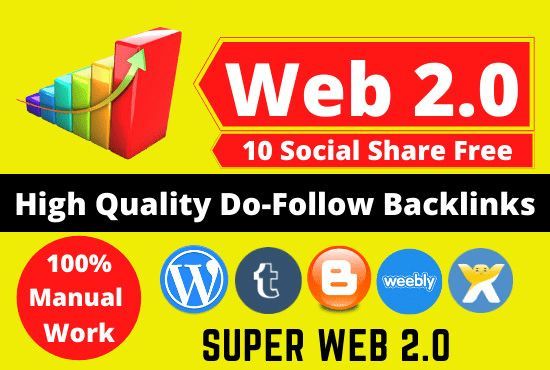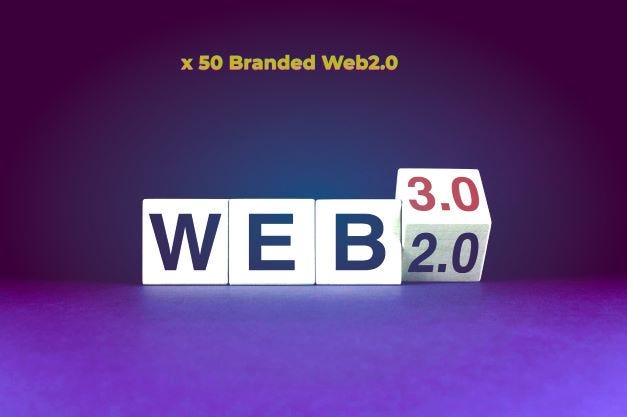Web 2.0 Backlinks: The Latest Surge in SEO Strategies

In the fast-moving world of search engine optimization, web 2.0 backlinks are making waves as one of the most effective methods to elevate website authority and visibility. These links, originating from interactive Web 2.0 platforms such as WordPress, Medium, Tumblr, and Blogger, enable marketers to amplify traffic while building a natural, diversified backlink profile. But how exactly can one acquire these links without falling into the trap of spammy tactics?
What Are Web 2.0 Backlinks?
Web 2.0 backlinks are links placed within user-generated content hosted on high-authority platforms that allow for content creation and customization. Unlike static backlinks, which are embedded on standard websites, Web 2.0 links flourish on fresh, engaging, and contextually relevant material. Search engines favor these backlinks because they signal authenticity, ongoing activity, and audience engagement.
Imagine these backlinks as lively signposts on a busy street, directing both users and search engines toward your main website while demonstrating that your content is alive and relevant.
How to Get Web 2.0 Backlinks
Securing web 2.0 backlinks requires creativity, precision, and consistent effort. Below is a step-by-step approach to harness their full SEO potential:
1. Scout High-Authority Platforms
The first step is to identify platforms that carry substantial domain authority. Websites like WordPress, Medium, Wix, Tumblr, and Blogger allow you to establish mini-sites or blogs where backlinks can thrive. Prioritize platforms with high traffic and credible SEO metrics to ensure your links are impactful.
2. Create Original, Engaging Content
Simply dropping a link isn’t enough. You need to craft compelling articles, tutorials, or case studies that resonate with your audience. Original, informative content attracts engagement and lends credibility to your web 2.0 backlinks, making them more valuable in the eyes of search engines.
3. Diversify Anchor Text
When embedding backlinks, rotate anchor texts thoughtfully. Use branded phrases, descriptive keywords, and long-tail variations rather than repeating the same term. A diverse approach ensures that your links appear natural and reduces the likelihood of search engine penalties.
4. Update Regularly
Refresh your Web 2.0 properties with new content periodically. Consistent updates signal to search engines that your site is active, boosting the SEO strength of your backlinks. Even minor additions, edits, or multimedia enhancements can improve credibility.
5. Interlink Your Properties
Strategically connect your Web 2.0 pages internally to channel authority toward your main website. Proper interlinking enhances user navigation, distributes link equity, and maximizes the overall SEO benefit of your backlinks.
6. Engage with the Community
Web 2.0 platforms thrive on interaction. Participate in discussions, respond to comments, and share insights on related content. Engagement not only increases your visibility but also reinforces the authority and relevance of your web 2.0 backlinks.
Benefits of Web 2.0 Backlinks
- Improved Search Engine Rankings: These backlinks are recognized as credible signals by search engines.
- Increased Referral Traffic: Engaging posts on reputable platforms drive more visitors to your website.
- Safe Link Profile Diversification: Unlike purchased links, Web 2.0 backlinks are considered natural and less likely to incur penalties.
- Content Amplification: They allow marketers to repurpose and distribute content across multiple channels.
Conclusion
For marketers aiming to dominate search engine rankings, web 2.0 backlinks are an indispensable tool. By creating original content, varying anchor texts, updating properties consistently, and actively engaging with communities, you can leverage these backlinks to boost both authority and traffic. Dynamic, interactive, and highly versatile, Web 2.0 backlinks are shaping the future of link-building and ensuring that your SEO efforts remain robust and sustainable.
Frequently Asked Questions
Q1: Are Web 2.0 backlinks effective in 2025?
Yes, when implemented naturally, they continue to provide a strong method for diversifying backlinks and improving domain authority.
Q2: Can I reuse the same content across multiple Web 2.0 sites?
Avoid exact duplication. Modify or expand content slightly for each platform to maintain uniqueness and SEO effectiveness.
Q3: How many Web 2.0 backlinks should I create?
Quality over quantity is key. Focus on 10–20 high-authority platforms rather than mass-producing low-quality links.
Q4: Will Web 2.0 backlinks deliver instant results?
SEO improvements are gradual. Typically, results appear within several weeks as search engines index and recognize the new backlinks.
Q5: Is purchasing Web 2.0 backlinks safe?
Buying links is risky and can lead to penalties. Organic creation and content-focused strategies are safer and more sustainable for long-term SEO success.
